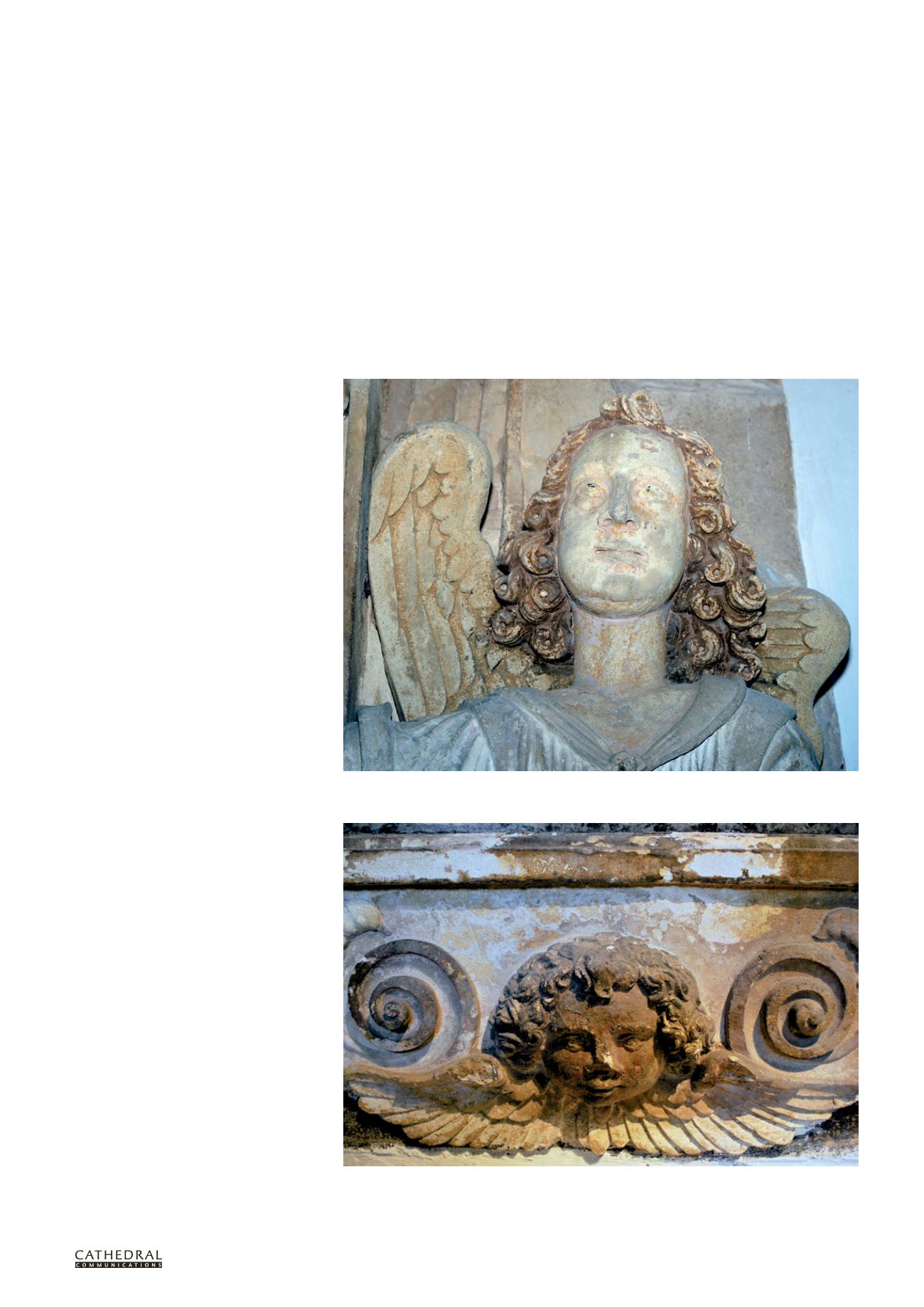

BCD SPECIAL REPORT ON
HISTORIC CHURCHES
24
TH ANNUAL EDITION
15
Detail of the lower section of the monument to Sir Edward and Lady Francis at St Leonard’s showing salt
efflorescence with associated blistering and loss of surface due to raised levels of moisture and salt activity
Detail of flanking figure to Sir Edward and Lady Francis Rodney monument showing pigment loss
(Photo: Roger Vlitos)
recent interventions. In this case it is
recommended that inspection holes are
opened up and, if necessary, a ground-
penetrating radar survey undertaken.
The nature of the internal fabric is
an important factor in the movement of
moisture and salts through and around
the monument. If the monument is
surrounded by modern impervious
plasters, these will encourage moisture
and soluble salts into its more porous
materials. The monument becomes a wick
to a continuous reservoir of moisture,
resulting in increased levels of moisture
and associated salt activity.
The management of the microclimate
around a monument can be more difficult
as it is inevitably related to the use of
the building and the associated issues
of heating and ventilation. Intermittent
use of the church results in a rise in
internal temperature due to comfort
heating as well as a rise in moisture
levels from human activity, particularly if
clothes are damp. Ventilation can also be
problematic as it can introduce increased
levels of moist air into the building,
thereby increasing the volume of water
in the microclimate. When the heating is
switched on, the warm air can hold more
moisture, but when it cools, condensation
occurs on cool surfaces.
All the above effects on the internal
and external fabric must be considered
before and alongside treating a church
monument, and in many cases a
compromise will have to be reached if
the internal environment is to attain
the stability it needs. In order to work
towards this it is important to consider
using the ‘buffering’ provided by the
volumetric mass of the historic fabric
to control and stabilise temperature,
moisture and relative humidity. The
improvement and ongoing maintenance
of the building envelope is therefore
the priority treatment in improving the
environment surrounding the monument.
To fully understand the microclimate,
ongoing monitoring over an extended
period is essential to implement a long-
term strategy for the church to manage its
heritage assets.
THE RODNEY MONUMENTS
The recent conservation of the Rodney
monuments at St Leonard’s Church
in Rodney Stoke, Somerset illustrates
how decay mechanisms and ongoing
deterioration are closely associated
with their environment. This group of
monuments to different generations of
the same family is located in the Rodney
family chapel on the north side of the
church, and includes five substantial and
stylistically distinct examples. Dating
from the 16th and 17th century, four are
constructed from limestone and one from
alabaster. The limestone monuments all
retain areas of original pigment which
give a valuable insight into the original
aesthetic of the monuments.
Concerns were raised at the damp
conditions in the Rodney Chapel and the
rate at which the once vivid colours were
fading. Overall, the monuments were in
structurally sound condition so it was
only necessary to partially dismantle the
canopies of the monuments to Sir Edward
and Lady Francis on the west wall and Sir
Thomas Rodney on the south wall where
the iron cramps were suffering from
corrosion and causing sections of the
monument to become unstable. A detailed
programme of cleaning, repair and
consolidation of pigment was carried out
but the main objective was to slow down
the decay mechanisms causing the surface
deterioration. As a result, investigating
the chapel environment and making the
necessary interventions to the fabric
were, and are, at the heart of this project.
The roof and rainwater goods had
undergone a recent programme of
repair which had reduced the level
of moisture at high level but had not
resolved the issues of damp in the


















